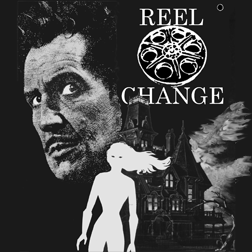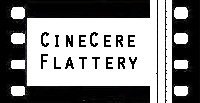 |
 |
 |
 |
 |
 |
 |
 |
 |

The Last Man on Earth is Not Alone
" 'Out of Rut's Alley, where the dead men lost their bones.' T.S. Eliot turns out to have been just as good a prophet as he was a poet."
-Dr. Neville, The Omega Man
The Wasteland
The Post-Apocalyptic Action Film takes place in "The
Wasteland." The Wasteland is dirty and devoid of life. Dusthis hard,
rural Wasteland both mirrors and distorts the idea of the frontier from
the American Western. The desolate and brutal frontier calls to be populated
and tamed; the Post-Apocalyptic frontier, The Wasteland, needs to be tamed
a second time. This is where humanity will reemerge from simple survival
to thrive anew. People must take to the Wasteland to escape the cities
and return to a state of nature; not in order to expand the base of their
power as in the Western, but simply because the cities are no longer inhabitable.
The city centers are depopulated, but not deserted. They
form an Urban Oasis, containing a wealth of resources but lacking promise
for the future of humanity. The buildings in the Urban Oasis may be left
standing, but the people no longer inhabit them. The Urban Oasis continually
reminds those few remaining members of society of what they once had.
As long as the buildings and city centers remain inhabitable the Urban
Oasis becomes the ideal place to survive and recover from the end of the
world on account of its concentration of resources. Because the cities
are mostly empty, the goods left in the abandoned stores and homes are
there for the looting. In The mega Man, the few survivors of a man-made
plague live within the city, taking what they need from decaying department
stores. In The Ultimate Warrior, a couple sneaks out of their neighborhood
compound to look for powdered milk for their baby. This is not a place
of promise and hope, but only of survival, and the survivors must take
to the Wasteland in order to escape the past and join the future.
Resources become the currency of the Post-Apocalyptic Wasteland.
Just as in the Western frontier, where cities spring up where the supply
lines are present and water is available, the survivors of the disaster
congregate where the most leftover supplies can be found. Those with the
most leftover supplies from before the disaster are the ones with power.
The longer humanity remains in the shelter of the Oasis the more the most-valued
resources tend to be those found in nature; water and food are the two
most important commodities in the Oasis, both otherwise in scant supply.
The opening of The Ultimate Warrior shows a group of survivors trying
to catch pigeons for food. On the other hand, the resources most valued
while the Oasis is still inhabited are those of the technological world.
In the world of the Mad Max Trilogy nothing is more valuable than gasoline.
All who inhabit this world will do anything for a few liters of "the
juice." It is not uncommon to see survivors wearing outfits constructed
of garbage. They consider that almost anything left over from the time
before has some worth, or is at least worth holding onto until it can
be assigned some worth or use. The characters in A Boy and His Dog wander
the post-nuclear desert with everything from weapons to tin cans strapped
to their bodies.
In the Oasis and the Wasteland there are two resources that
are always valuable, women and technological know-how. In some Post-Apocalyptic
realities women are only valuable from a non-reproductive sexual level.
In A Boy and His Dog, after the rape and murder of a girl, Vic complains
that some people are too selfish because "she could have been used
two or three more times." In other realities, only the fertile women
are of value. After The Fall of New York is solely based on a search for
the last fertile woman left on Earth. Similarly, Le Dernier Combat centers
on a scientist who keeps a fertile woman hidden in a cell, feeding and
caring for her every day, waiting for a suitable fertile man in an attempt
to propagate the human race. Technological know-how is also a constantly
valuable commodity. In The Road Warrior, the Mechanic is one of the most
important members of the walled-in community that Max finds. The Mechanic
is a paraplegic who is moved from place to place in a large sling. Because
of his handicap, he would ordinarily not be coddled in the harsh Post-Apocalyptic
world, but he is cared for and listened to because he is the only one
in the community who can repair the motor vehicles so valuable to this
automotive-centric reality. Robert Neville, The mega Man himself, is a
research doctor trying to find a cure to the disease that has wiped out
most of the world. It is his medical and technological knowledge that
makes him the focus of all other characters in the film.
Another idea that is shared by all denizens of the Oasis is that of Sanctuary, a place where things will be better. Sanctuary exists as a fabled place out in the Wasteland. In The mega Man the survivors make plans to leave the city for the mountains, where they believe it to be safer. The seafaring survivors in the post-global warming Waterworld tell tales of a fabled Dryland. The refinery tribe in The Road Warrior leaves its fortress for Paradise Beach, a Sanctuary promised only from a ream of tourist postcards. The refinery tribe's leader, Pappagallo, tells Max they must move on to Sanctuary when he says, "You're a scavenger, Max. You're a maggot. You know that? You're living off the corpse of the old world."
Pappagallo knows that if the survivors remain in the Oasis too long humanity will stagnate and eventually give up. This belief in a better place is the optimistic core of the Post-Apocalyptic Film. As the films are products of a Pre-Apocalyptic world, the filmmakers believe that these Post-Apocalyptic worlds can be avoided, that there is somewhere better we can go than to inevitable destruction at our own hands - and if we cannot avoid the disaster, that humanity will once again rise, this time from the rubble of its own folly. Although some films, such as Beneath The Planet of the Apes, sell out this optimism and destroy the world entirely in the end, most of these films end with some hope for the future of the planet and the future of the human race.
